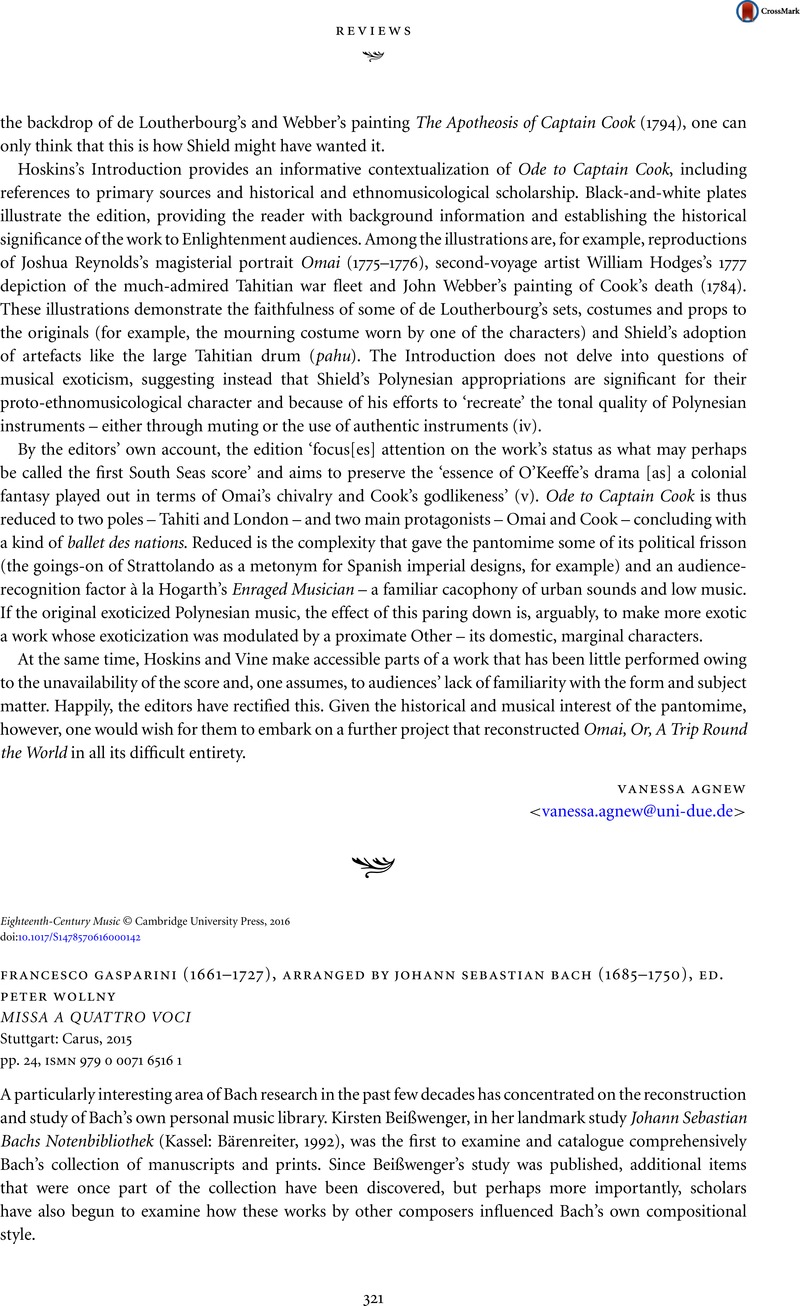No CrossRef data available.
Article contents
FRANCESCO GASPARINI (1661–1727), ARRANGED BY JOHANN SEBASTIAN BACH (1685–1750), ED. PETER WOLLNY MISSA A QUATTRO VOCI Stuttgart: Carus, 2015 pp. 24, ismn 979 0 0071 6516 1
Published online by Cambridge University Press: 16 August 2016
Abstract
An abstract is not available for this content so a preview has been provided. Please use the Get access link above for information on how to access this content.

- Type
- Reviews: Editions
- Information
- Copyright
- Copyright © Cambridge University Press, 2016




